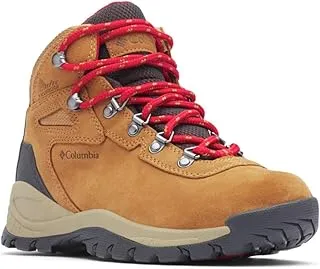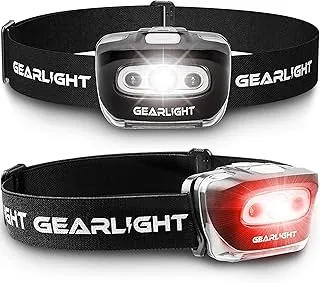
The Complete Beginner Hiking Gear Guide: Essential Equipment for Your First Adventure
Starting your hiking journey can feel overwhelming with countless gear options available. I've spent over a decade exploring trails across the country, and I'll share the essential beginner hiking gear you actually need to get started safely and comfortably, plus money-saving tips I wish I'd known when I first laced up my boots at Nature Guests.
Essential Hiking Gear for Beginners
When I started hiking fifteen years ago in the Appalachian Mountains, I made the classic mistake of over-purchasing gear I didn't need while skipping essentials that could have saved me from uncomfortable situations. The truth about beginner hiking gear is that you need surprisingly few items to get started safely, but those items must be chosen thoughtfully.

Your daypack is the foundation of your beginner hiking gear collection. I recommend starting with a 20-25 liter capacity pack that fits your torso length properly. During my early hiking days in Great Smoky Mountains National Park, I learned that a well-fitted pack distributes weight evenly and prevents the shoulder strain that plagued my first few adventures. Look for padded shoulder straps, a chest strap, and external attachment points for trekking poles.
Water and food form the next critical component of your gear. I always carry more water than I think I'll need – a lesson learned during a challenging summer hike in Shenandoah National Park when my usual consumption doubled due to unexpected heat. A 2-3 liter hydration system or water bottles, combined with electrolyte supplements, keeps you properly hydrated. For food, focus on high-energy, lightweight options like nuts, dried fruits, and energy bars that won't spoil in changing temperatures.
The beauty of starting with quality beginner hiking gear is that these foundational pieces will serve you well as your hiking ambitions grow. Whether you're planning ***short day hikes to experience the benefits of hiking*** or working toward longer adventures, investing in proper hydration, nutrition, and carrying systems sets you up for success on every trail.
Choosing the Right Hiking Footwear
Nothing will ruin a hiking experience faster than poorly fitting footwear. During my first year of hiking, I made the mistake of wearing regular sneakers on a rocky trail in Acadia National Park, resulting in rolled ankles and blisters that took weeks to heal. Proper hiking footwear isn't just about comfort – it's a crucial safety component of your beginner hiking gear arsenal.

For most beginner hikers, I recommend starting with mid-height hiking boots that provide ankle support without the weight of mountaineering boots. The terrain you'll encounter determines your needs: well-maintained trails like those in many state parks work well with hiking shoes, while rocky or root-covered paths benefit from boots with more substantial protection. I've found that waterproof or water-resistant materials are essential, especially in regions like the Pacific Northwest where weather changes rapidly.
The break-in period is critical and often overlooked in beginner hiking gear discussions. I spend at least two weeks wearing new hiking boots around town, gradually increasing wear time before taking them on trails. This process helped me avoid the painful blisters I experienced during my early hiking mistakes. Pay attention to pressure points and hot spots during this period – quality boots should feel comfortable from day one with minor adjustments as they conform to your feet.
Don't underestimate the importance of proper hiking socks as part of your footwear system. Merino wool or synthetic blend socks prevent blisters and manage moisture better than cotton alternatives. I learned this lesson the hard way during a wet spring hike in the Blue Ridge Mountains when cotton socks left my feet pruned and painful. Quality socks are often the difference between enjoying your hike and counting the minutes until you reach the parking lot. For those wondering ***if hiking provides good exercise***, proper footwear ensures you can hike longer and more frequently without injury.
Hiking Clothing and Layering Systems
Understanding layering systems revolutionized my hiking comfort and safety. Early in my hiking journey, I'd either overheat from wearing too much or shiver from being underprepared for temperature changes. The three-layer system – base layer, insulating layer, and shell layer – forms the core of effective beginner hiking gear clothing strategy, adaptable to virtually any weather condition you'll encounter.
The base layer sits against your skin and manages moisture. I swear by merino wool or synthetic materials that wick sweat away from your body and dry quickly. Cotton kills in outdoor environments – a lesson I learned during a humid summer hike in the Ozarks when my cotton t-shirt became a soggy, uncomfortable mess that took hours to dry. Quality base layers regulate body temperature and prevent the clammy feeling that makes hiking miserable.
Your insulating layer traps warm air close to your body when temperatures drop. Fleece jackets, down vests, or synthetic insulation work well depending on conditions. I carry a lightweight fleece even on warm days because mountain weather changes rapidly – I've experienced 30-degree temperature swings between trailheads and summits. This middle layer should be easy to add or remove as your body temperature fluctuates during exertion.
The outer shell protects against wind and precipitation. A quality rain jacket isn't just for stormy days – wind chill at elevation can turn a pleasant hike dangerous quickly. During a spring hike in Rocky Mountain National Park, unexpected afternoon thunderstorms caught our group without proper shell layers, forcing an uncomfortable and potentially unsafe retreat. Your rain jacket should breathe well to prevent internal condensation while blocking external moisture. For hikers exploring ***hiking's mental health benefits***, being comfortable in all weather conditions ensures you can maintain a consistent hiking routine year-round. Proper beginner hiking gear clothing systems make the difference between seasonal hikers and year-round enthusiasts.
Safety and Navigation Equipment
Safety equipment separates prepared hikers from those hoping for the best. I've used every piece of safety gear I carry at some point during my hiking adventures, from treating fellow hikers' injuries to navigating in unexpected fog. The Ten Essentials provide a framework for beginner hiking gear safety planning, ensuring you're prepared for emergencies while keeping weight manageable for day hiking.

Navigation tools deserve top priority in your safety kit. While smartphones are convenient, they fail when you need them most – during emergencies or in areas with poor reception. I carry a detailed topographic map and compass on every hike, skills I developed after getting temporarily disoriented during a foggy morning in the White Mountains. GPS devices provide excellent backup, but traditional navigation skills ensure you're never truly lost.
A comprehensive first aid kit tailored to hiking environments forms another crucial component. Beyond basic bandages and pain relievers, include blister treatment, elastic bandages for sprains, and any personal medications. I've treated everything from minor cuts to twisted ankles on trails, and having proper supplies makes the difference between a minor inconvenience and a trip-ending emergency. Illuminate your path with reliable lighting – headlamps and flashlights with extra batteries ensure you're never caught in darkness.
Emergency shelter and fire-starting materials round out essential safety gear. A lightweight emergency bivy or space blanket weighs ounces but could save your life if weather turns dangerous or you're forced to spend an unexpected night outdoors. Fire-starting materials include waterproof matches and backup ignition sources. These items hope to never be used, but their peace of mind value makes them essential beginner hiking gear components. For those interested in ***hiking for weight loss***, safety gear ensures you can hike consistently and confidently, building the routine necessary for fitness goals.
Budget-Friendly Gear Recommendations
Building your beginner hiking gear collection doesn't require spending thousands of dollars upfront. I've learned through experience where to invest and where to save, helping you avoid expensive mistakes while ensuring safety and comfort. Smart shopping strategies and understanding gear priorities allow you to start hiking immediately while building a quality kit over time.

Start with essential safety items that shouldn't be compromised: quality footwear, a reliable headlamp, and proper rain protection. These three categories directly impact your safety and comfort, making them worth the investment. I recommend buying these items new from reputable brands to ensure reliability and warranty coverage. Other gear categories offer more flexibility for budget-conscious beginners.
Consider borrowing or renting gear initially to determine preferences before purchasing. Many outdoor retailers offer rental programs for expensive items like backpacks and sleeping systems. I wish I'd known about these programs when starting – I could have avoided purchasing a pack that didn't fit properly and boots that were wrong for my hiking style. Rental experiences help you understand features you actually need versus marketing claims.
Shop end-of-season sales and consider previous year models for significant savings on quality gear. Outdoor gear rarely changes dramatically year to year, so last season's products often provide identical performance at reduced prices. Used gear from reputable sources can offer excellent value, especially for items like packs and poles that don't wear out quickly with normal use. Building your beginner hiking gear collection gradually allows you to learn what works for your hiking style while spreading costs over time. Focus on one quality purchase per month rather than buying everything at once – this approach helped me avoid buyer's remorse while building a kit perfectly suited to my needs.
Seasonal Gear Considerations
Your beginner hiking gear needs change dramatically with seasons, but smart layering and versatile choices minimize required purchases. I've hiked year-round in various climates, and seasonal adaptations often involve adding layers rather than replacing entire systems. Summer hiking emphasizes sun protection and hydration, while winter adds insulation and traction devices. Spring and fall require the most versatile approach, as conditions change rapidly and unpredictably during transition seasons.
Conclusion
Starting your hiking journey with proper beginner hiking gear sets the foundation for years of safe, enjoyable outdoor adventures. Through my decade-plus of trail experience, from the humidity of southeastern forests to the alpine conditions of western peaks, I've learned that quality gear isn't about having the most expensive equipment – it's about choosing reliable, appropriate items that enhance your safety and comfort.
Remember that gear is only as good as your knowledge of how to use it. Take time to familiarize yourself with each piece of equipment before heading onto challenging trails. Practice with your navigation tools, break in your footwear properly, and test your layering systems in various conditions. The best beginner hiking gear becomes second nature through experience and regular use.
Your hiking journey will naturally evolve, and so will your gear needs. Start with essentials, learn what works for your hiking style and local conditions, then gradually build your collection. The trails are waiting, and with proper preparation and quality gear, you'll be ready to explore them safely and comfortably. Whether you're seeking adventure, fitness, or peace of mind, the right equipment ensures your hiking experiences remain positive and rewarding for years to come.
Ready to start your hiking adventure?
Visit our other helpful guides for complete hiking preparation:

